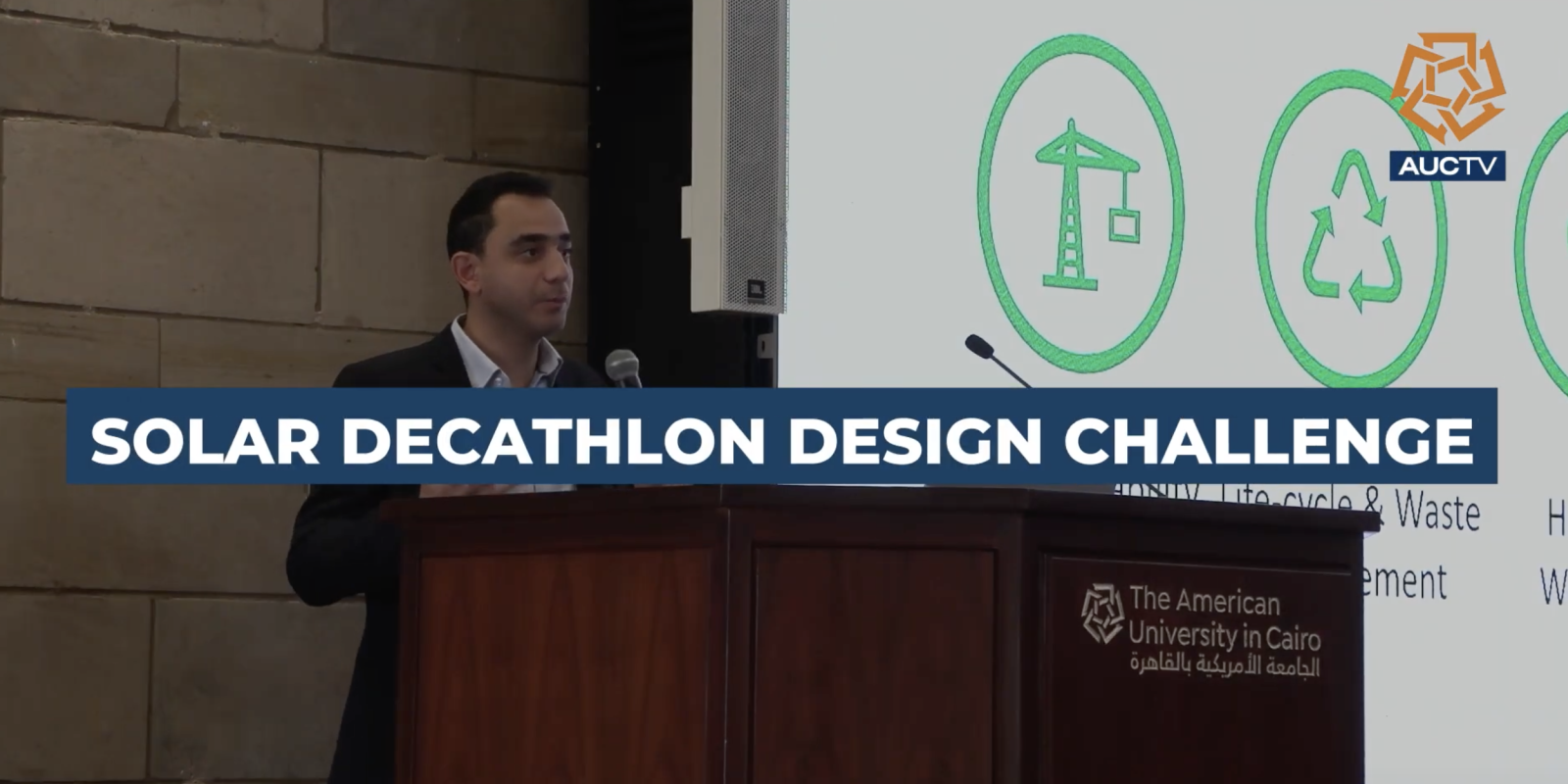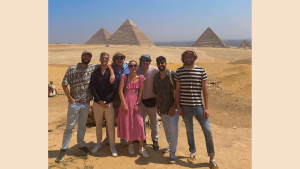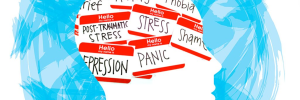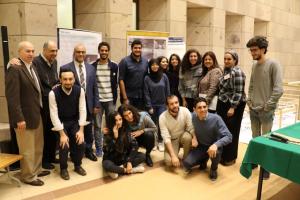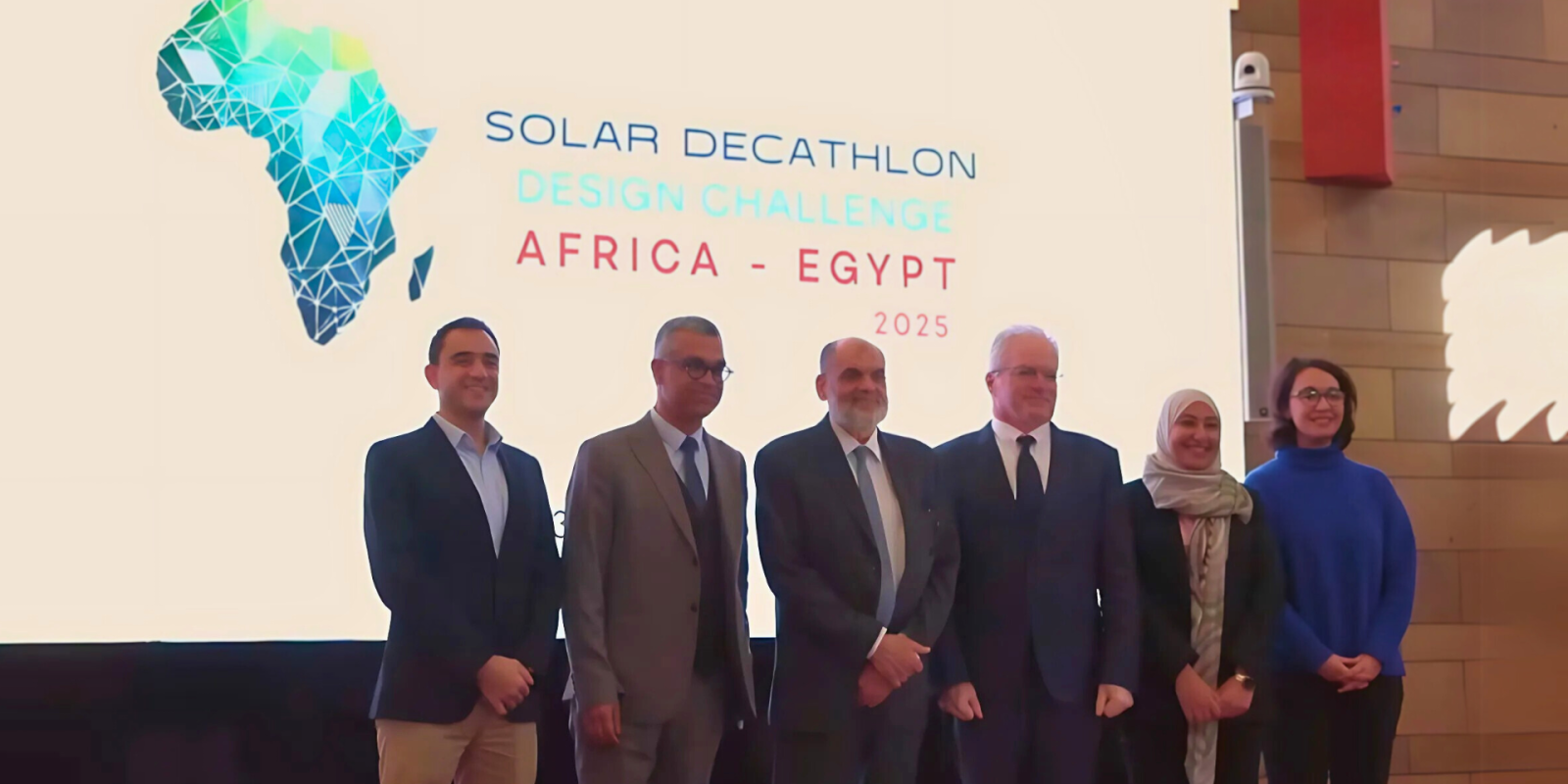
AUC Launches Egypt's First Solar Decathlon Design Challenge - Africa
Reaffirming its belief that youth are pivotal in facing climate challenges and promoting energy-efficient building design, AUC is hosting The Solar Decathlon Design Challenge – Africa 2025, an international competition that seeks fresh and innovative ideas by challenging university students to design high-performance, low-carbon buildings powered by renewable energy.
“The Solar Decathlon Design Challenge is an excellent opportunity for students to showcase their innovation in sustainable design, and to network and learn from others,” said Khaled Tarabieh, associate professor of sustainable design and University architect.
"By bringing together students and professionals from across the continent, this competition encourages collaboration, knowledge exchange and the celebration of Africa’s unique approach to sustainability in the built environment.”
AUC is hosting the competition — held for the first time in Egypt — in partnership with the U.S. Department of Energy and the Egyptian Ministry of Higher Education and Scientific Research, reinforcing the University’s commitment to sustainability, clean energy education and innovative research. The challenge aligns with AUC’s mission to lead in green building initiatives and empower students to become drivers of the global transition to clean energy solutions.
“The competition serves as a platform to bridge diverse African cultures, fostering a deeper understanding of how traditional knowledge, local materials and indigenous architectural practices contribute to sustainable and resilient built environments,” said Ibrahim Abotaleb, associate professor and associate chair of the Department of Construction Engineering.
"For AUC, it is an opportunity to highlight our leadership in sustainable and high-efficiency building solutions."
The challenge comprises 10 contests that test the ability of students to collaboratively develop zero-energy buildings while addressing real sustainability challenges such as carbon emissions, energy consumption, affordability, and community resilience. Participants will also integrate the latest technologies and materials when designing their solutions, tailored to the unique challenges facing Africa’s building environment.
“The focus on Africa in this edition enables competing teams to showcase innovative and effective solutions that fit the needs, wants and aspirations of all the peoples of Africa," said Sherif Goubran, assistant professor of sustainable design and graduate program director in the Department of Architecture. "For AUC, it is an opportunity to highlight our leadership in sustainable and high-efficiency building solutions."
Registered teams will be working through the next year on developing their design solutions and will have the opportunity to present their initial designs to expert jurors at the virtual semi-final competition in November 2025. Finalist teams will then be invited to compete in person at AUC in March 2026, where the Division Winners and Grand Winners will be announced.
“I’m looking forward to welcoming the young, bright minds from across Africa at AUC in March 2026 to celebrate their success and learn from them,” said Goubran.
Registration is open and closes on October 15, 2025.
“The competition presents a remarkable opportunity to showcase the richness of African creativity and innovation in sustainable design," Abotaleb said. "By bringing together students and professionals from across the continent, this competition encourages collaboration, knowledge exchange and the celebration of Africa’s unique approach to sustainability in the built environment.”
Key Milestones for the Solar Decathlon Design Challenge – Africa 2025 (SDDC-A 2025)
- Registration Opens: February 13, 2025
- Information Session (Online): May 15, 2025
- Registration Closes: October 15, 2025
- Semi-Final Design Submission Deadline: November 1, 2025
- Semi-Final Competition (Online Event): November 15, 2025
- Final Design Submission Deadline: February 17, 2026
- Final Competition (In-Person Event at AUC): March 25-26, 2026
For more information: The Solar Decathlon Design Challenge – Africa 2025 (SDDC-A 2025)
